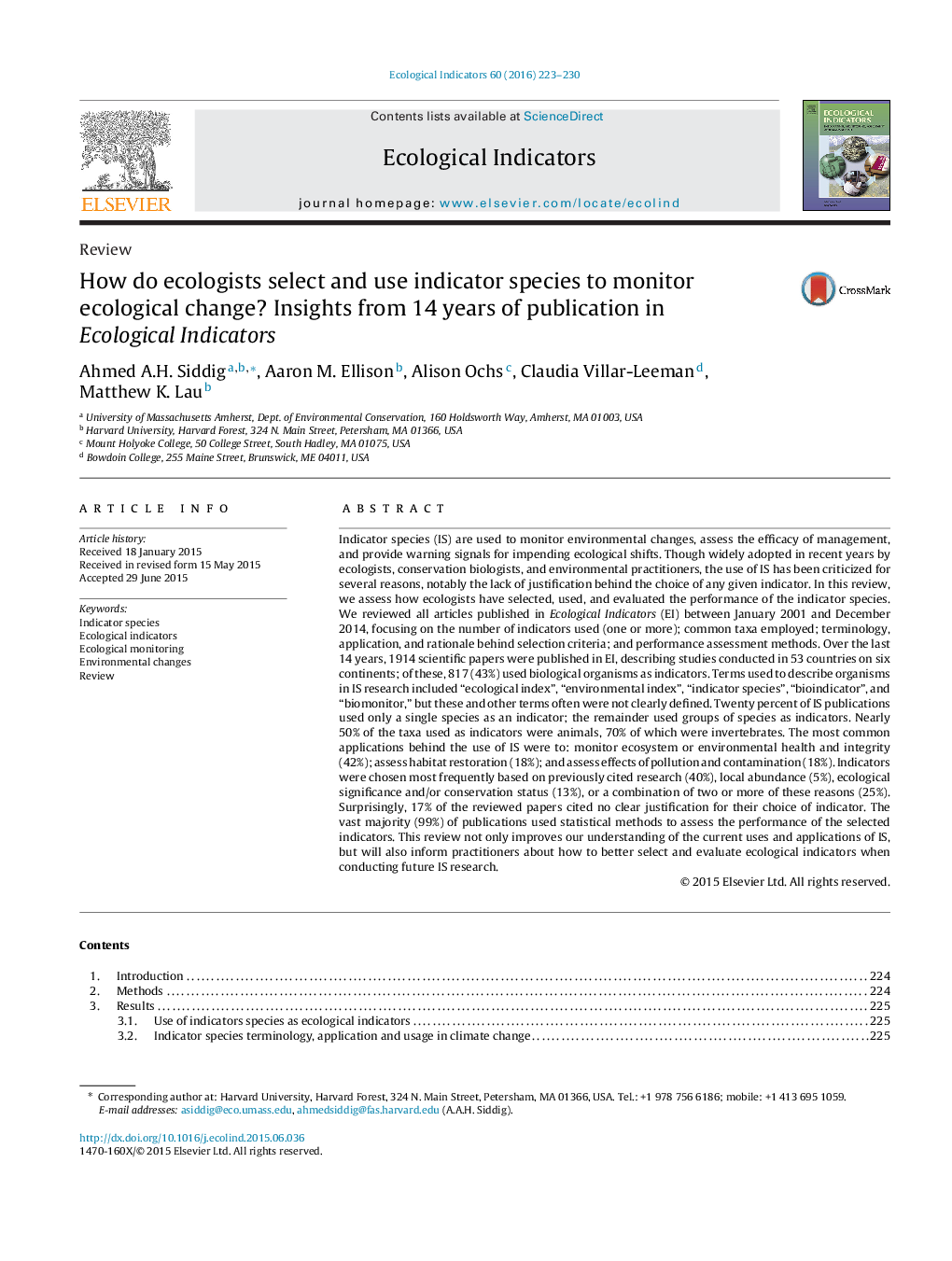| کد مقاله | کد نشریه | سال انتشار | مقاله انگلیسی | نسخه تمام متن |
|---|---|---|---|---|
| 6294019 | 1617141 | 2016 | 8 صفحه PDF | دانلود رایگان |
عنوان انگلیسی مقاله ISI
How do ecologists select and use indicator species to monitor ecological change? Insights from 14 years of publication in Ecological Indicators
ترجمه فارسی عنوان
چگونه اکولوژیست ها را برای نظارت بر تغییرات زیست محیطی انتخاب و استفاده می کنند؟ بینش از 14 سال انتشار در شاخص های زیست محیطی
دانلود مقاله + سفارش ترجمه
دانلود مقاله ISI انگلیسی
رایگان برای ایرانیان
کلمات کلیدی
گونه های شاخص، شاخص های محیطی، نظارت بر محیط زیست، تغییرات محیطی، مرور،
موضوعات مرتبط
علوم زیستی و بیوفناوری
علوم کشاورزی و بیولوژیک
بوم شناسی، تکامل، رفتار و سامانه شناسی
چکیده انگلیسی
Indicator species (IS) are used to monitor environmental changes, assess the efficacy of management, and provide warning signals for impending ecological shifts. Though widely adopted in recent years by ecologists, conservation biologists, and environmental practitioners, the use of IS has been criticized for several reasons, notably the lack of justification behind the choice of any given indicator. In this review, we assess how ecologists have selected, used, and evaluated the performance of the indicator species. We reviewed all articles published in Ecological Indicators (EI) between January 2001 and December 2014, focusing on the number of indicators used (one or more); common taxa employed; terminology, application, and rationale behind selection criteria; and performance assessment methods. Over the last 14 years, 1914 scientific papers were published in EI, describing studies conducted in 53 countries on six continents; of these, 817 (43%) used biological organisms as indicators. Terms used to describe organisms in IS research included “ecological index”, “environmental index”, “indicator species”, “bioindicator”, and “biomonitor,” but these and other terms often were not clearly defined. Twenty percent of IS publications used only a single species as an indicator; the remainder used groups of species as indicators. Nearly 50% of the taxa used as indicators were animals, 70% of which were invertebrates. The most common applications behind the use of IS were to: monitor ecosystem or environmental health and integrity (42%); assess habitat restoration (18%); and assess effects of pollution and contamination (18%). Indicators were chosen most frequently based on previously cited research (40%), local abundance (5%), ecological significance and/or conservation status (13%), or a combination of two or more of these reasons (25%). Surprisingly, 17% of the reviewed papers cited no clear justification for their choice of indicator. The vast majority (99%) of publications used statistical methods to assess the performance of the selected indicators. This review not only improves our understanding of the current uses and applications of IS, but will also inform practitioners about how to better select and evaluate ecological indicators when conducting future IS research.
ناشر
Database: Elsevier - ScienceDirect (ساینس دایرکت)
Journal: Ecological Indicators - Volume 60, January 2016, Pages 223-230
Journal: Ecological Indicators - Volume 60, January 2016, Pages 223-230
نویسندگان
Ahmed A.H. Siddig, Aaron M. Ellison, Alison Ochs, Claudia Villar-Leeman, Matthew K. Lau,
